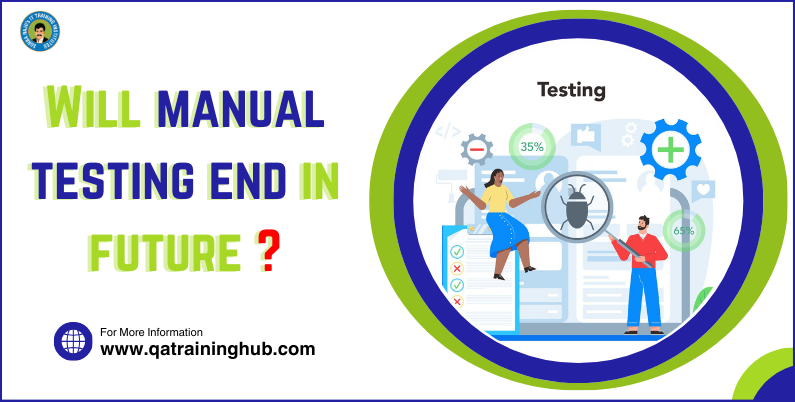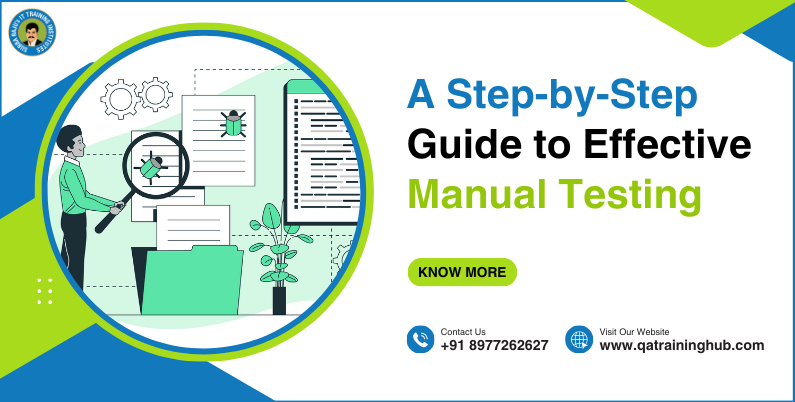
The Crucial Role of Manual Testing in Modern Software Development
The importance of delivering high-quality software cannot be overstated, in the fast-paced realm of modern software development. While automated testing has gained significant traction in recent years, the role of manual testing remains vitally important in ensuring the overall quality and user satisfaction of software products. This blog explores the reasons why manual testing continues to be a critical component in the software development lifecycle.
The Evolution of Software Testing
Before delving into the role of manual testing, it’s essential to understand the evolution of software testing. In the early days of software development, testing was often an afterthought, with developers primarily focused on coding and functionality. As software complexity increased, the need for systematic testing became evident, leading to the establishment of formal testing methodologies.
The advent of automated testing tools further revolutionized the testing landscape. Automated testing is efficient for repetitive and time-consuming tasks, allowing for rapid execution of test cases and immediate feedback. However, despite the advantages of automation, there are certain aspects of testing that require the human touch.
The Human Element in Testing
While automated testing excels in executing repetitive test cases, it lacks the intuition, creativity, and real-world experience that manual testing brings to the table. Human testers possess the ability to think critically, identify edge cases, and intuitively explore the software in ways that automated tools may overlook. The human element is particularly crucial when it comes to subjective aspects of software quality, such as user experience, usability, and aesthetic appeal.
1. Exploratory Testing
Exploratory testing is a dynamic and unscripted approach to testing, where testers actively explore the software to identify defects that may not be covered by predefined test cases. This method relies heavily on the tester’s intuition, creativity, and domain knowledge. Exploratory testing is valuable in uncovering unexpected issues, evaluating the user interface, and assessing the overall user experience.
Automated tests, while efficient, often follow predefined scripts and may miss the nuances of real-world user interactions. Manual testers, on the other hand, can adapt to changing conditions and explore the software in ways that automated scripts cannot. Exploratory testing is particularly effective in uncovering subtle issues that may only manifest in specific scenarios, contributing to a more comprehensive testing strategy.
2. User Experience and Usability Testing
User experience (UX) and usability testing are integral aspects of software quality assurance that require a human touch. While automated tests can verify functional aspects of an application, they often fall short in evaluating the user interface design, accessibility, and overall user satisfaction. Manual testing allows for a holistic assessment of the software from the end user’s perspective.
Human testers can identify design inconsistencies, assess the clarity of user interfaces, and evaluate the overall flow of user interactions. Usability testing often involves scenarios where testers simulate real-world usage, providing valuable insights into how users may interact with the software in diverse situations. The subjective nature of UX and usability makes manual testing an essential component in delivering software that not only functions correctly but also provides a positive and intuitive user experience.
3. Adapting to Dynamic Requirements
In today’s agile and iterative development environments, software requirements often evolve rapidly. Automated tests are effective when dealing with stable and well-defined functionalities, but they may struggle to keep pace with changing requirements. Manual testing offers the flexibility to adapt quickly to evolving project dynamics.
Human testers can easily modify test cases, explore new functionalities, and verify changes in real-time. This adaptability is especially crucial in scenarios where frequent updates, feature additions, or changes in business requirements occur. Manual testing provides a safety net, ensuring that even as the software undergoes continuous changes, critical aspects of quality are consistently evaluated.
4. Complex Scenarios and Edge Cases
Automated tests are excellent at executing predefined scenarios and catching common bugs, but they may struggle to handle complex scenarios and edge cases that require a deep understanding of the business domain. Manual testers can leverage their domain knowledge to identify and explore intricate scenarios that may not be covered by automated test scripts.
Consider a financial application that involves complex calculations or intricate business rules. Manual testers with expertise in finance can create test scenarios that mimic real-world calculations, ensuring the accuracy and reliability of the software in critical business functions. The ability to address complex, domain-specific scenarios is a distinctive strength of manual testing.
5. Accessibility Testing
Ensuring that software is accessible to users with diverse abilities is a critical aspect of software quality. Accessibility testing involves evaluating how well a software application can be used by individuals with disabilities. While automated tools can assist in identifying some accessibility issues, manual testing is essential for a comprehensive assessment.
Manual testers can simulate the experience of users with different disabilities, such as visual or motor impairments, and provide valuable feedback on the application’s accessibility features. This human-centric approach is crucial for creating software that is inclusive and meets the needs of a diverse user base.
6. Intuition and Creativity
Manual testers bring a level of intuition and creativity to the testing process that automated tools struggle to emulate. Human testers can instinctively detect irregularities, subtle patterns, and potential issues that may not be apparent through automated testing alone. The ability to think outside the box and approach testing with a creative mindset enables manual testers to uncover defects that automated tests might overlook.
Manual testers also play a vital role in error guessing, leveraging their experience to anticipate potential issues and prioritize testing efforts accordingly. This intuitive aspect of testing adds a layer of assurance that goes beyond the scripted nature of automated tests.
7. User Acceptance Testing (UAT)
User Acceptance Testing is a critical phase in the software development lifecycle where the software is evaluated by end users to ensure that it meets their expectations and requirements. UAT often involves subjective assessments, and human testers are best suited to gauge whether the software aligns with user needs and preferences.
End users may have unique expectations and specific workflows that are challenging to capture in automated test scripts. Manual testing allows for direct interaction with end users, facilitating real-time feedback and adjustments based on user preferences. The collaborative nature of UAT, combined with the insights provided by manual testers, ensures that the software aligns with the ultimate goal of meeting user expectations.
Conclusion
In conclusion, while automated testing has become an integral part of the software development process, manual testing remains vitally important for ensuring comprehensive quality assurance. The human element in testing brings a level of intuition, creativity, and adaptability that automated tools cannot replicate. From exploratory testing to user experience evaluation, manual testing plays a crucial role in addressing the nuanced aspects of software quality.
As software development continues to evolve, the synergy between automated and manual testing will become increasingly vital. Striking the right balance between automation and manual testing allows development teams to leverage the strengths of both approaches, ultimately leading to the delivery of high-quality software that meets user expectations and withstands the dynamic challenges of the modern development landscape.
Looking for Manual testing course in Hyderabad? Look no further than QA Training Hub. QA TRAINING HUB provides best comprehensive manual testing training to IT professionals and freshers. Join the course now and become a Manual Tester!







